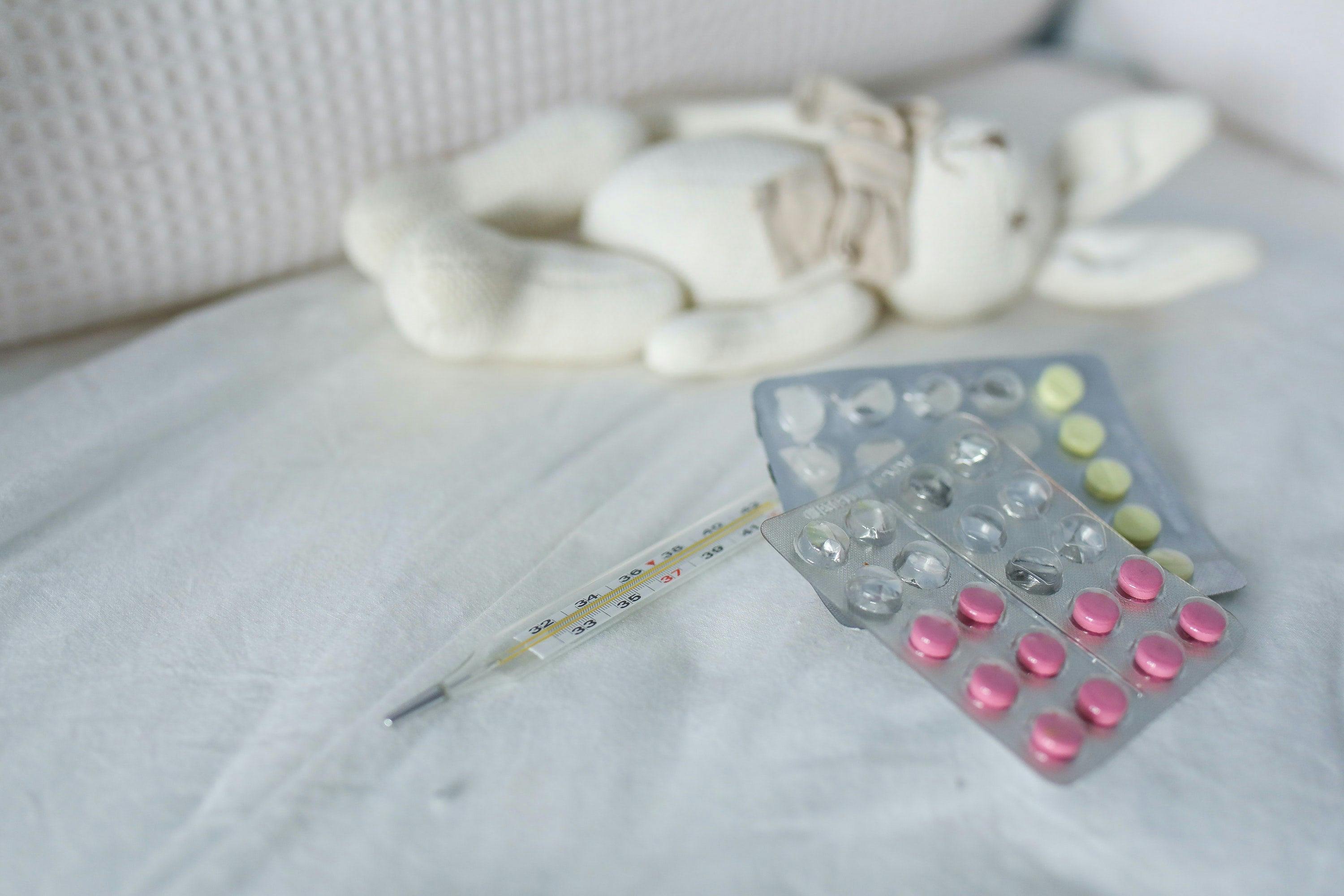We’re right in the middle of flu season, and chances are, at least one of your kids will end up with the sniffles at some point. While wearing masks in public and meticulously washing hands will certainly help fight off the flu, it’s best to be prepared and plan ahead in case one of your children does end up sick. Here’s everything you need to build your own parenting sick day survival kit.
Quarantine
First of all, we know that any signs of illness could be more than just the flu this year. So if your kids start showing any symptoms that also align with COVID-19, quarantine your sick child away from the rest of the family as soon as possible. Fingers crossed it’s nothing more than a cold, but it’s better to be safe. Besides, you don’t want the flu spreading to the rest of your family either.
Sick Day Survival Kit Supplies
For sniffles and coughs
- Tissues - An obvious must. Grab a few boxes with fun patterns and colors, as it may help your little ones grab a tissue over something else, like their bed sheets or shirt. When the tissues run out, don’t throw the box away. Attach the empty box to the new with rubber bands or tape for a built-in trash can for used tissues, so they don’t end up all over your house instead.
- Honey and salt - You most likely already have these in your pantry, so this is an easy one to check off of the survival kit list. Gargling salt water or drinking warm tea or lemon water with honey can both be good, natural ways to soothe a sore throat.
- Nasal aspirator - Great for clearing out stuffed up baby and toddler noses to ease congestion.
- Aquaphor - Vaseline will also work, but Aquaphor has a little more moisturizing power. Runny noses often turn into red, chaffed noses from all the blowing and wiping. But a layer of Aquaphor can help keep them from drying out.
For fevers
- Thermometer - Under-the-tongue thermometers have a reputation for being the most accurate, but it can be difficult to get little children to hold still long enough. Ear thermometers are a good alternative, or nowadays every drugstore carries the forehead scanners.
- Kids Tylenol or other acetaminophen - to help get the fever down.
- Pedialyte pops - Frozen treats can help reduce fever and soothe your child. Pedialyte pops in particular are great to have on-hand because they are hydrating and helpful for stomach bugs as well.
For stomach bugs
- Bucket or wash basin - The younger your kids, the worse their aim. A small plastic waste bin may be too narrow of a target when the nausea hits. And that is a mess you’d rather not clean up. A medium-sized wash basin is easy enough to store and makes for easier aiming.
- Gatorade - Great for rehydrating your kids and restoring their electrolytes after being sick. Plus, it tastes good, so it shouldn’t be a battle to get your kids to drink it.
For cleaning
- White hand towels - You don’t have to have a designated set of sick towels, but it can be helpful. White is important because you can bleach away any germs afterwards. But towels are helpful in many ways, from clean up rags to protecting pillow cases from sick or snot. You can also place them under the sick bucket in case any doesn’t make it in.
- Hydrogen peroxide wipes - Clorox now sells hospital-grade hydrogen peroxide wipes for household use, which is one of the few products that can kill the norovirus stomach bug. If you can’t find these in store, you could also keep a bottle of hydrogen peroxide on hand for cleaning. Just get some plastic gloves to protect your hands.
Don’t forget about the car
Sickness can strike anywhere, and if you’ve got multiple children each pursuing their own activities, you probably spend a good amount of time in the car with your kids. It’s always a good idea to keep some tissues, barf bags and disinfecting wipes within reach in the car.
Prevention
To help keep the flu at bay and those sniffles away, add some immune-boosting vitamin drops into your kids’ daily routine!

